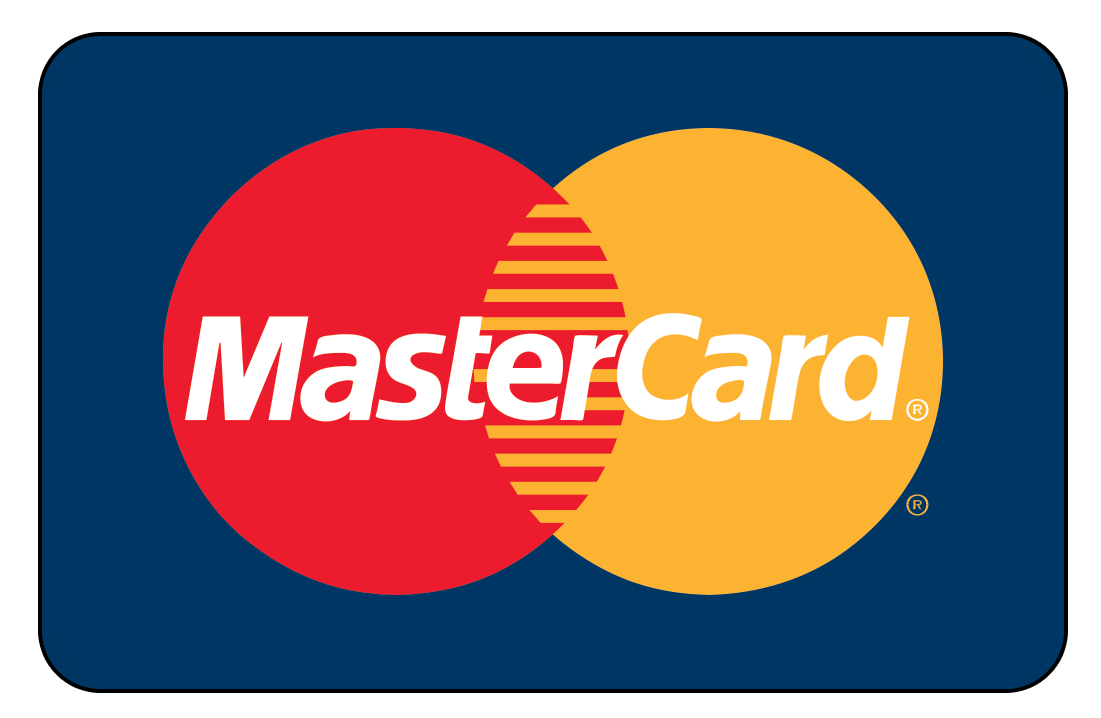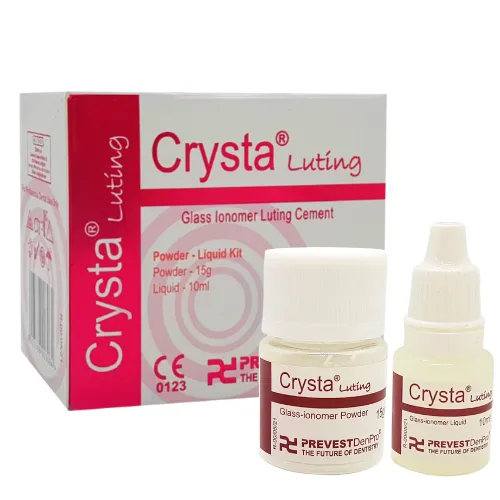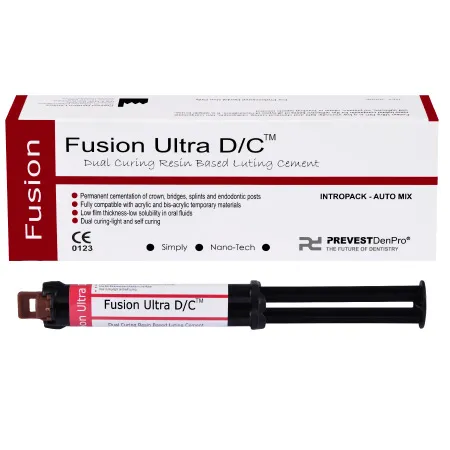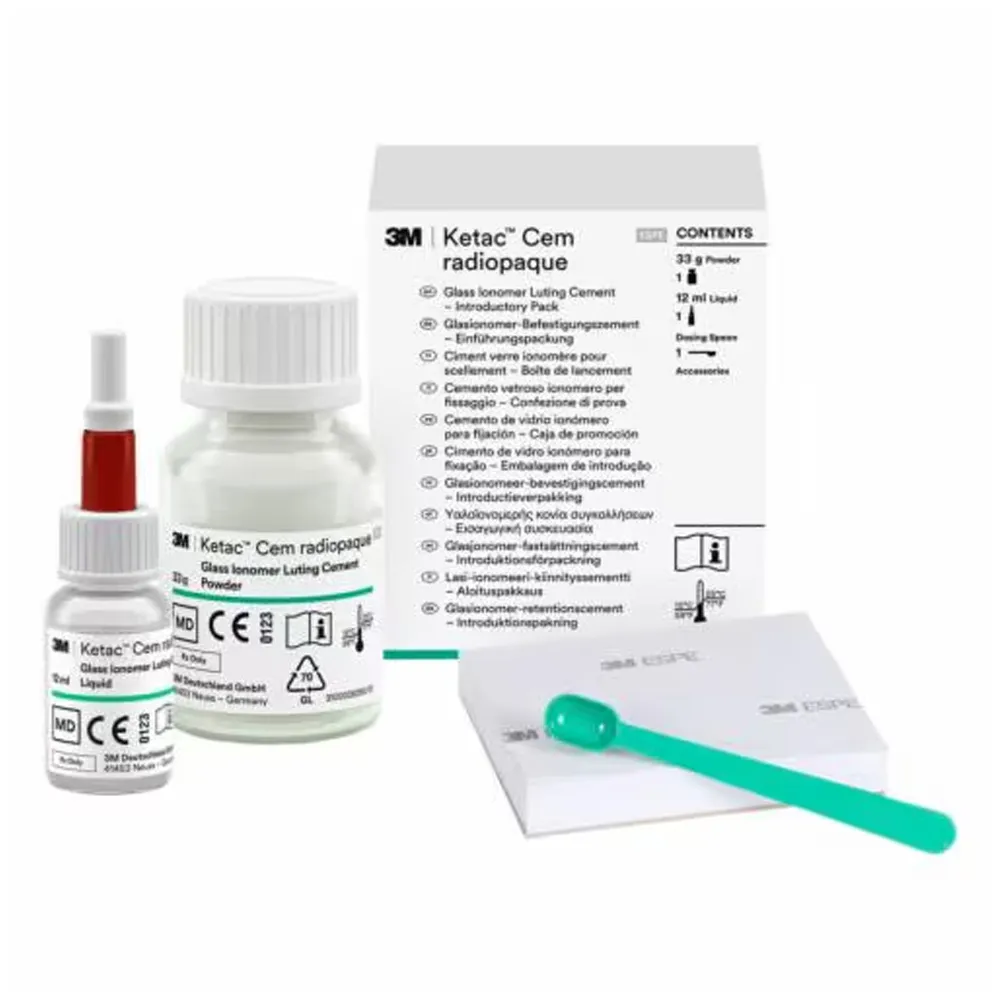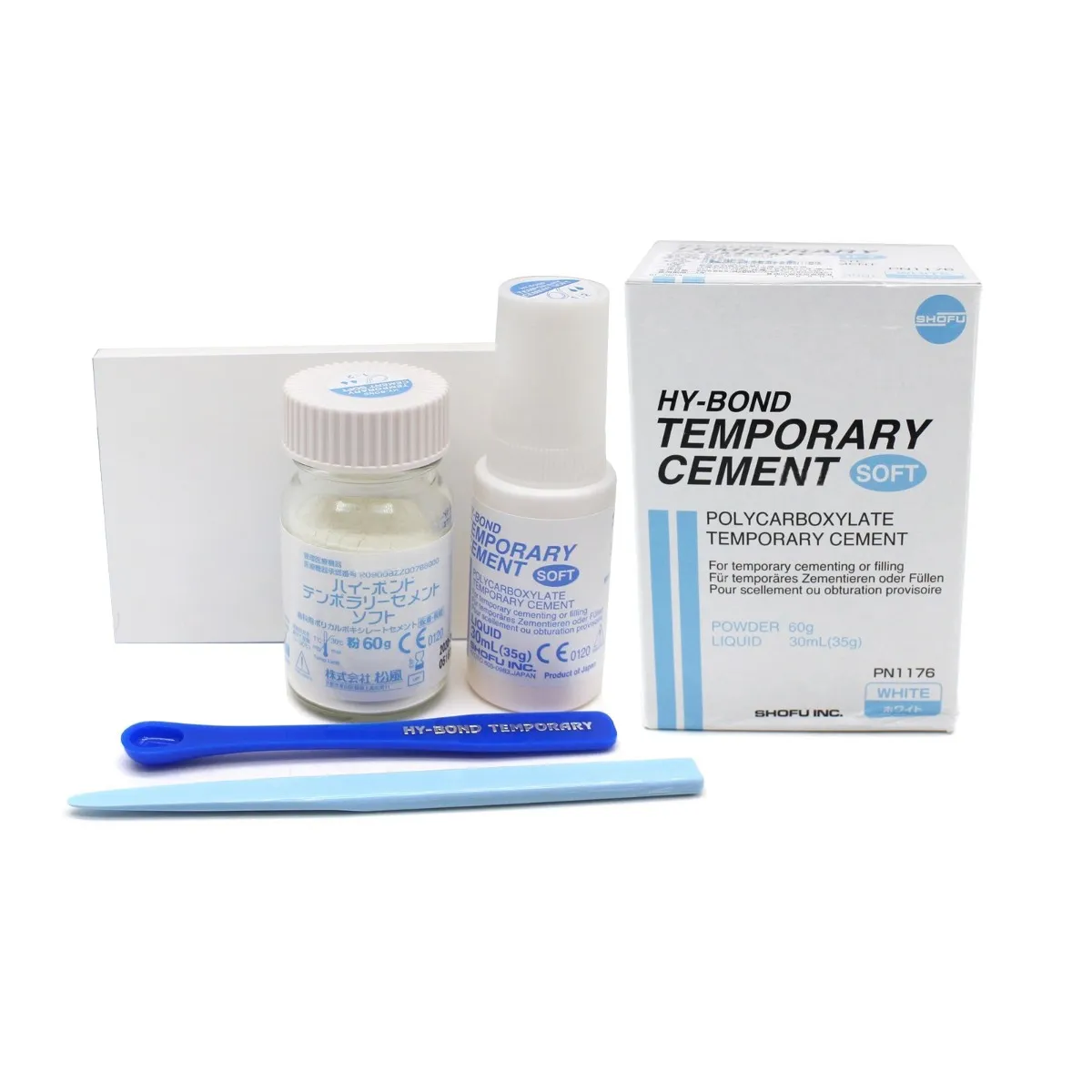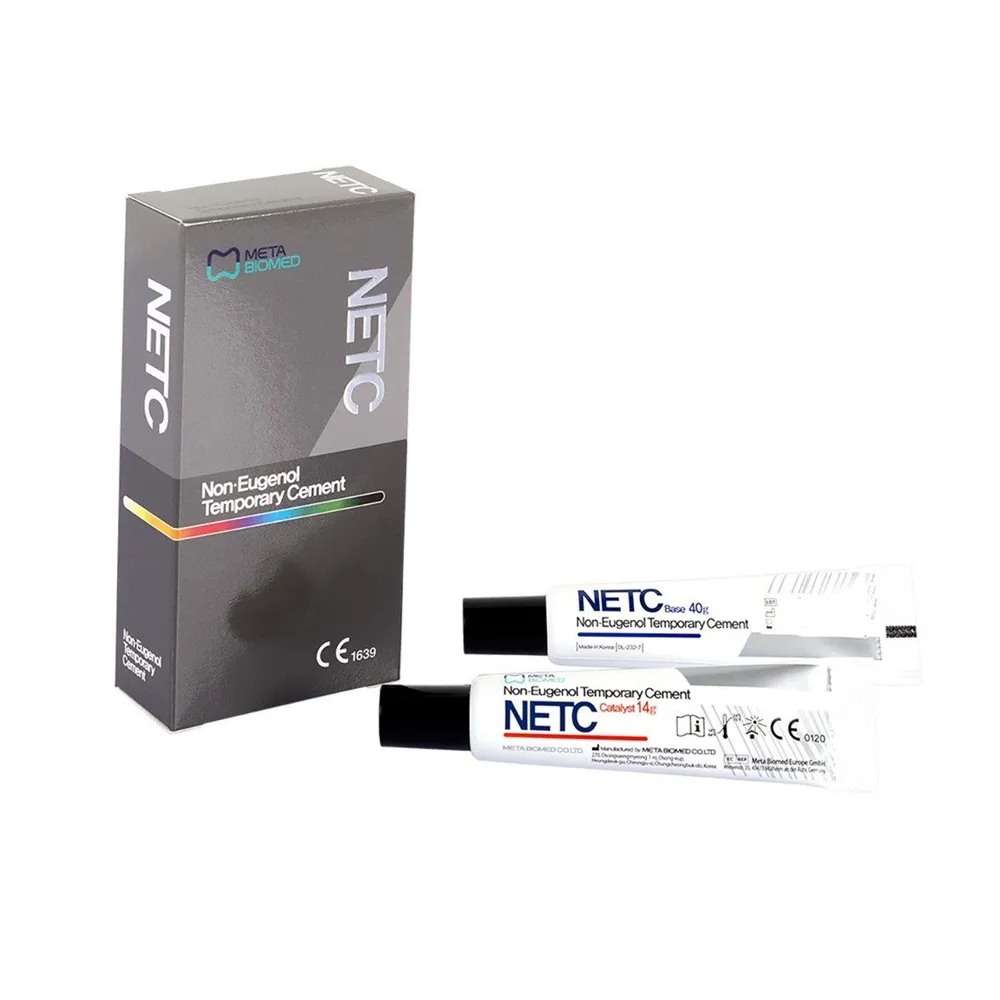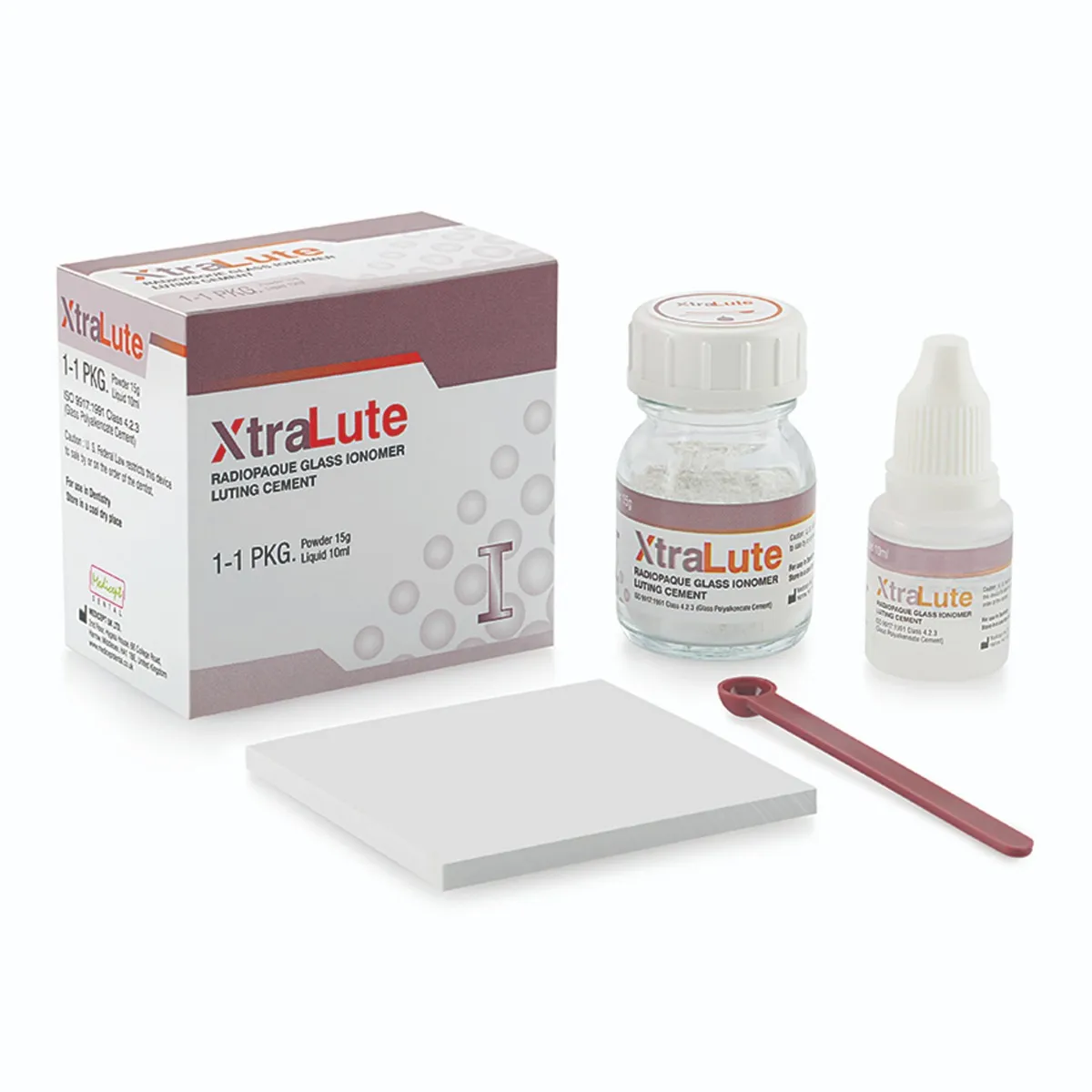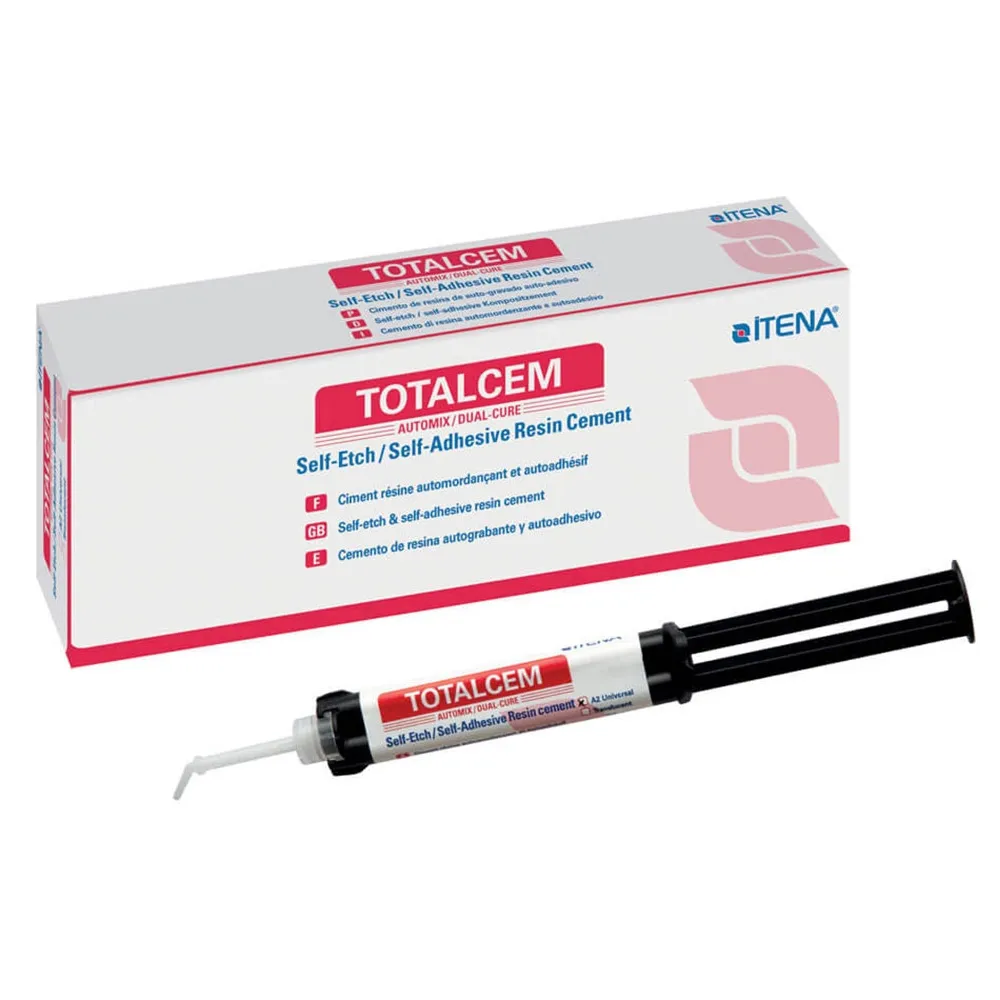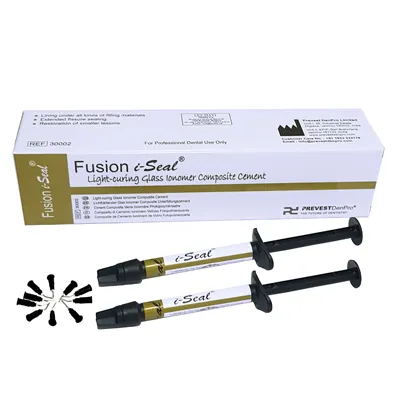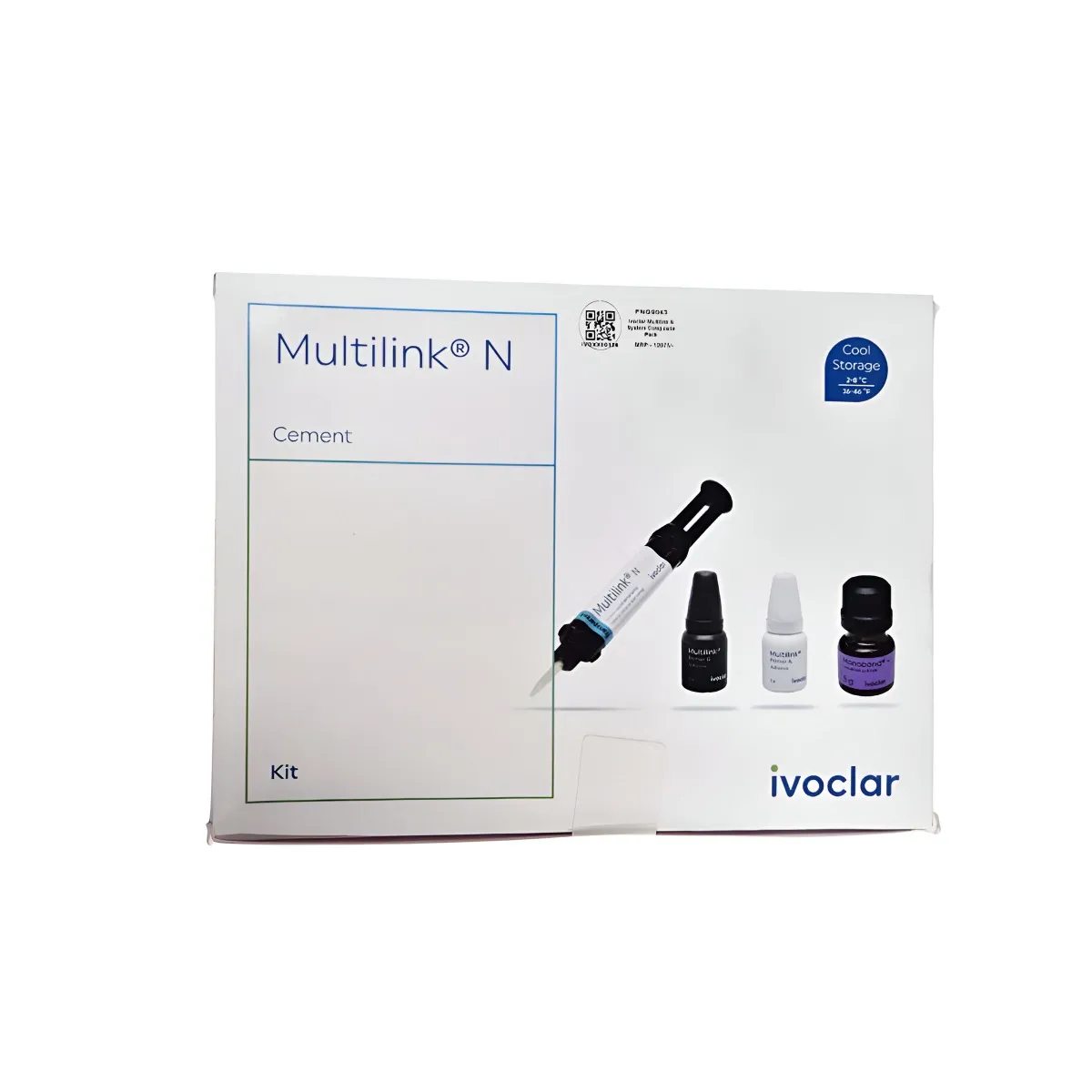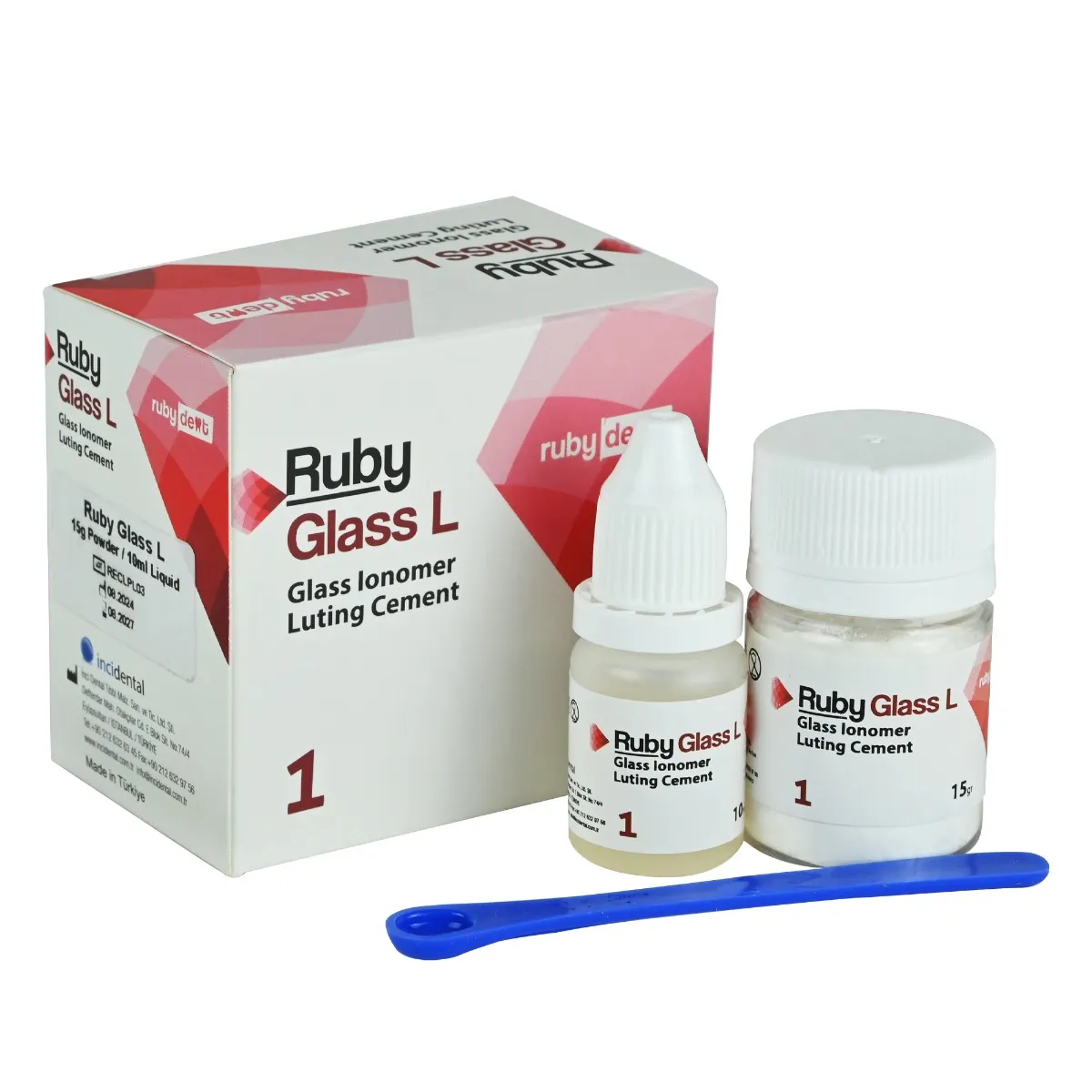Luting Cements Dentalkart offers a specialized category of luting cements curated to meet the precise needs of dental professionals. Luting cements play a crucial role in dental restorative procedures by bonding various restorations securely to the tooth structure. They are categorized into two main types: adhesive and non-adhesive.
Non-adhesive cements provide mechanical retention through a combination of water and reactive filler, while adhesive cements form strong adhesive bonds with both tooth hard tissues and restorations using anhydrous-silanized non-reactive fillers.
Dentalkart's comprehensive range includes a variety of luting cements suitable for different applications. For long-term restorations, dental professionals can choose from zinc phosphate cement, zinc polycarboxylate cement, glass-ionomer cement (GIC), resin-modified glass-ionomer cement (RMGICs), and resin cement. These definitive cements are ideal for sealing crowns, inlays, onlays, veneers, bridges, and other long-term dental restorations.
For provisional restorations and temporary applications, dentists can select from provisional cements, which provide essential pulp protection during the fixation of temporary restorations.
Dentalkart's luting cement category boasts a diverse selection of cements, including water-based, resin-based, and oil-based options. Water-based choices encompass Zinc polycarboxylate, zinc phosphate, and glass-ionomer cement (GIC) available in conventional and resin-modified formulations. Resin-based cements offer the versatility of self-curing, light-curing, and dual-curing, along with the convenience of adhesive and self-adhesive properties. Oil-based alternatives include Zinc-oxide eugenol and Temporary GIC, catering to specific clinical requirements. The inventory also includes oil-free variants like Zinc-oxide non-eugenol for added convenience.
With a wide range of brands like 3M Espe, Ammdent, Ivoclar Vivadent, GC, Medicept, Primer Dental, Voco, Shofu, D-Tech, Prevest Denpro, Avue, Wizdent, Coltene Whaledent, Waldent, and NeoEndo, dentalkart ensures that dental professionals have access to top-quality luting cements to achieve optimal clinical outcomes.
Dentalkart's commitment to delivering the best products empowers dental professionals to make well-informed decisions for successful and long-lasting dental restorations. With our extensive range of luting cements and renowned brands, dentists can confidently elevate their practice standards, ensuring superior patient care and satisfaction.
Q: What is the meaning of luting in dentistry?
A: Luting cement refers to a type of dental adhesive or cement used to bond dental restorations or prosthetics to the tooth structure. Luting cements are specifically designed to create a strong and durable bond between the dental restoration, such as crowns, bridges, inlays, onlays, veneers, or orthodontic bands, and the natural tooth. They play a crucial role in ensuring the stability, retention, and longevity of dental restoration by providing a reliable and secure attachment. Luting cement come in various types, including adhesive and non-adhesive variants, and they may be categorized based on their composition.
Q: What is the classification of luting cement?
A: Based on Composition:
- Zinc Phosphate Cement: Traditional luting cement composed of zinc oxide powder and phosphoric acid liquid.
- Glass Ionomer Cement (GIC): Made of a mixture of fluoro-aluminosilicate glass powder and polyacrylic acid liquid.
- Resin-Modified Glass Ionomer Cement (RMGIC): A modified version of GIC with added resin for improved strength.
- Zinc Polycarboxylate Cement: Composed of zinc oxide powder and polyacrylic acid liquid with added polyacrylic acid copolymer.
Based on the Mode of Application:
- Self-curing Luting Cement: Sets automatically without the need for external light or activation.
- Light-curing Luting Cement: Requires light activation for setting and curing.
- Dual-curing Luting Cement: Combines self-curing and light-curing properties for versatility.
Based on Use:
- Permanent Luting Cement: Used for long-term dental restorations or prosthetics like crowns, bridges, etc.
- Temporary Luting Cement: Used for provisional restorations or temporary fixes.
Based on Properties:
- Adhesive Luting Cement: Forms an adhesive bond with both the tooth structure and the restoration.
- Non-Adhesive Luting Cement: Provides mechanical retention without forming an adhesive bond.
Q: What is the composition of luting cement?
A: The general components of different luting cements include:
Powder:
- Zinc oxide: Provides the main bulk and strength to the cement.
Fluoro-aluminosilicate glass: Commonly used in glass ionomer cements (GICs).
- Polyacrylic acid copolymer: Found in zinc polycarboxylate cements.
Liquid:
- Phosphoric acid: Used in zinc phosphate cements.
- Polyacrylic acid: Utilized in GICs and zinc polycarboxylate cements.
- Resin matrix: Present in resin-modified glass ionomer cements.
Additional Components:
- Water: Required for the mixing process of some luting cements.
- Radiopaque fillers: Added to improve visibility on X-rays for easy detection.
Q: What are the key differences between adhesive and non-adhesive luting cements, and when should I use each type?
A: Adhesive luting cements form strong bonds with tooth hard tissues and restorations, while non-adhesive cements provide mechanical retention. Use adhesive cements for long-term restorations, and non-adhesive cements for temporary fixes.
Q: Which specific type of luting cement is most suitable for bonding zirconia restorations?
A: Resin-based luting cements, particularly self-adhesive or dual-curing variants, are ideal for bonding zirconia restorations due to their excellent bonding capabilities and long-term stability.
Q: What is the recommended technique for using glass-ionomer cement (GIC) in pediatric restorative procedures?
A: When using GIC for pediatric restorations, proper isolation and moisture control are crucial for ensuring the best results. Additionally, using a resin-modified GIC may offer improved aesthetics and strength for such cases.
Q: Are there any temporary luting cements that can be used for provisional restorations with challenging retention?
A: Yes, certain temporary luting cements, like zinc-oxide non-eugenol-based options, provide enhanced retention for challenging provisional restorations while still allowing for easy removal when needed.
Q: I'm looking for a reliable luting cement that offers long-term durability for CAD/CAM restorations. Any suggestions?
A: Resin cements are highly recommended for bonding CAD/CAM restorations due to their exceptional adhesive properties and long-term durability, providing reliable and lasting results.
Q: Can I use a resin-modified glass-ionomer cement as a base for amalgam restorations?
A: Yes, a resin-modified glass-ionomer cement can be used as a base for amalgam restorations, as it offers better adhesion and chemical bonding to both the tooth structure and the amalgam.
Q: Are there any specific precautions I should take when using zinc phosphate cement for long-span bridges?
A: When using zinc phosphate cement for long-span bridges, ensure proper mixing and adequate working time to facilitate accurate cementation. Additionally, consider using a temporary cement for a trial period before applying the definitive cement.








